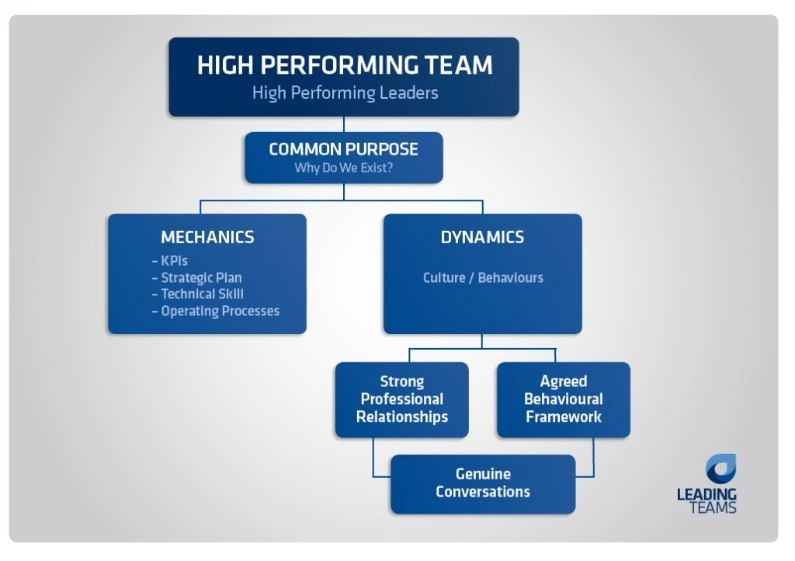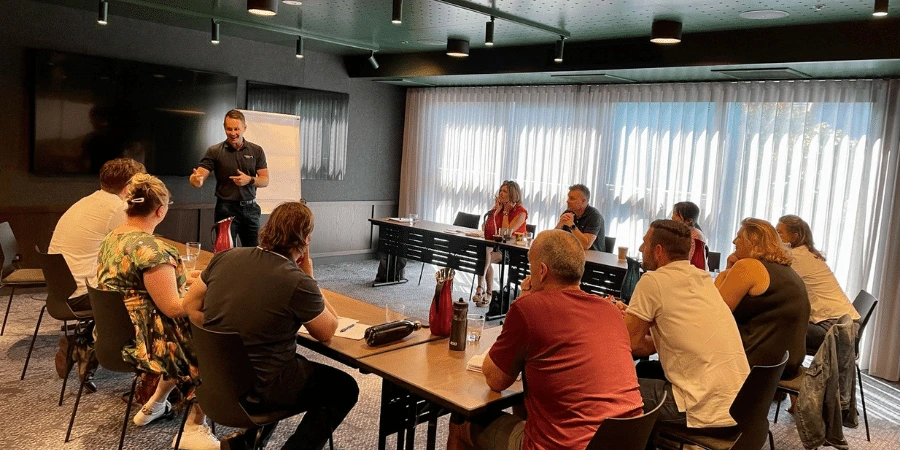Performance Improvement Program
Our expert facilitators implement our performance improvement program to support organisations in building high performing teams.
The purpose of our Performance Improvement Program (PIP) is to build a high performing team through cultural change over a sustained period.
How does it work?
During the process, our facilitators partner with the organisation to implement the Leading Teams High Performing Teams model.
How do we implement our Model?
We facilitate conversations with clients to ensure their purpose is clear and understood. We support the creation of an environment where strong professional relationships and agreed productive behaviours allow genuine conversations to take place. These conversations will be used to reward behaviour and performance that aligns to the direction the team have agreed to take, as well as being a tool to allow the challenging of counterproductive behaviour where gaps in performance exist.


Our program will allow leaders to take ownership of their organisation’s culture and ultimately improve their performance. It provides all members of the team with the necessary tools to create functional dynamics within their organisation, in order to allow shared vision, goals, behaviours and expectations.
The program will provide a simple and practical framework for all members of the team to understand that they all:
- Influence the culture of the team/organisation.
- Are accountable for their behaviour (especially when they are under pressure).
- Can benefit from participating in open communication and honest reviews of performance.
What does the PIP involve?
The program examines:
- What is effective leadership?
- Understanding how culture affects performance.
- Analysis of current culture and development of the desired culture.
- The link between mechanics and dynamics.
- The impact of behaviour on performance.
- Creating a high performing team dynamic.
We aim to be our clients most valued business partner. We invest in strong professional relationships with our clients that allow us to support and challenge all team members to be accountable, from the CEO to the newest employee.
Who would benefit from a PIP?
- Any team that wants to improve their performance.
- Any organisation that understands this is a process & that the leaders need to buy-in.
- Any team that understands the link between investing in the team dynamics to drive the mechanics to improve performance & results.
What are the key cultural factors that stop teams from being high performing?
- Leaders mindset
- Leaders leadership style
- Team spilt into silos
- Team is changing (growing/ shrinking)
- Personality clashes/ politics
- Teams/leaders that accept mediocrity
Learning outcomes from a PIP
- Understand what it takes to be a member of a high performing team and how to help shape a high performing team.
- Have clarity about their own behaviour and decision making preferences, and how these impact on their role and the wider team.
- Understand the role of genuine conversations in driving performance and be confident having them with their team.
- Possess and be able to use a toolkit of strategies and practical activities to navigate the challenges of teamwork and dealing with different personalities.
- Know how to model, reward and challenge the right behaviours in their team.
- Be a leader in the promotion of the company values and behaviours.
- Be committed to pro-actively shaping the future of their organisation as a leader.
Testimonials
– Mary Campbell, CEO – TAFE Queensland

– David Salisbury – Essential Energy

– Alan Schembri, Chief HR Officer – BE Campbell

Ask Us About The Performance Improvement Program
We work in a wide range of industries in organisations of all sizes. Our Performance Improvement Program can be rolled out across the whole organisation, from the board and senior executive teams, right through to entry-level teams.
